The Bronze Age Timeline
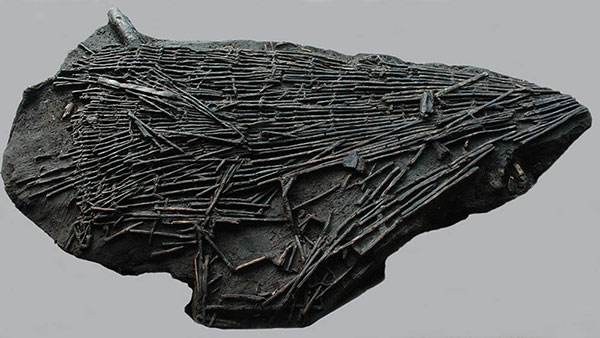
People lived by fishing, hunting and gathering nuts, seeds and edible foods. They used stone tools and wooden fish traps such as this woven trap made from withies. Mesolithic Fish trap, Clowanstown, Co. Meath. c. 5000 BC
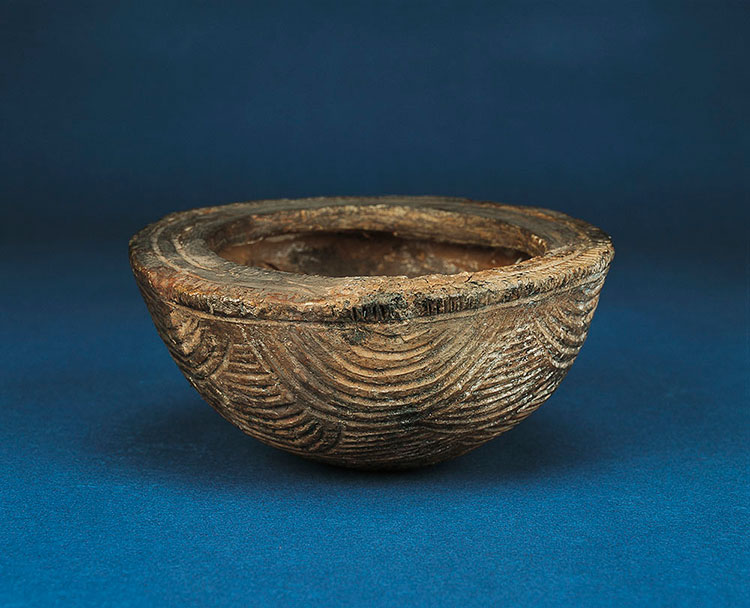
Life was more settled as people began to plant and harvest crops. Cattle and sheep were brought to Ireland. People made pottery vessels that were used for cooking and storing food. Special pots were buried with the dead such as this bowl from Baunogenasraid, Co. Carlow, 3500-3400 BC.
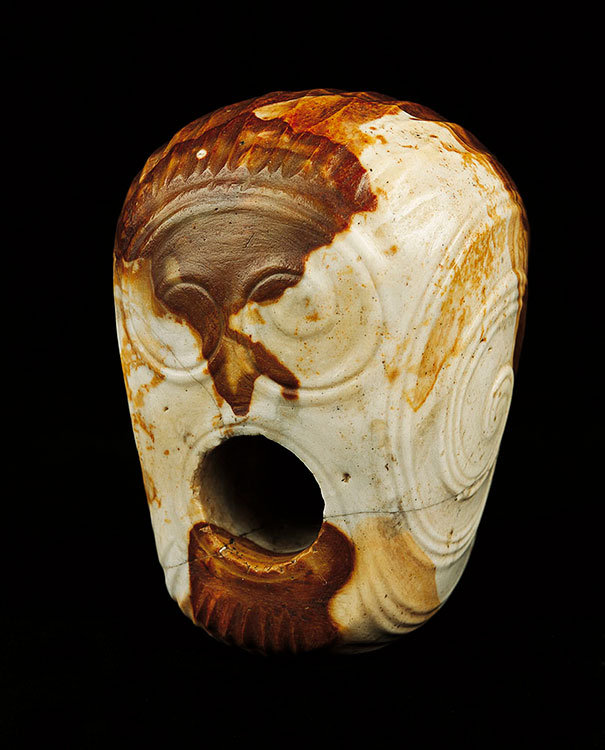
People in Ireland began to build large stone tombs, called ‘megalithic’ tombs. Some tombs were carved with symbolic patterns. Many people were buried in the same tomb. Sometimes rare artefacts such as this flint macehead were also buried. Flint Macehead, Knowth, Co. Meath, 3300-2800 BC.
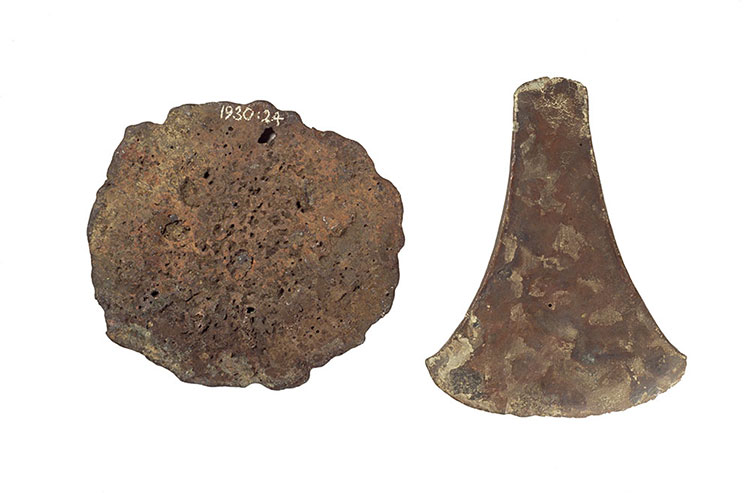
Irish people learned how to extract copper ore from rock. The earliest copper mine in the country was at Ross Island, Killarney, Co. Kerry. This axehead and copper cake were found in a bog close to Killarney in 1925. Copper Axehead and Copper Cake, Knocksarnet, Co. Kerry, c. 2500BC NMI ID: 1930:23 & 1930:24.
2500 BC Early Bronze Age - The First Metalworkers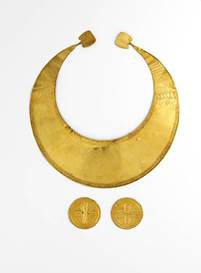
Gold was collected from streams and rivers, melted into ingots and hammered into shape to make sheet gold objects such as sun discs and moon-shaped collars called lunulae like those in the hoard from Coggalbeg, Co. Roscommon.
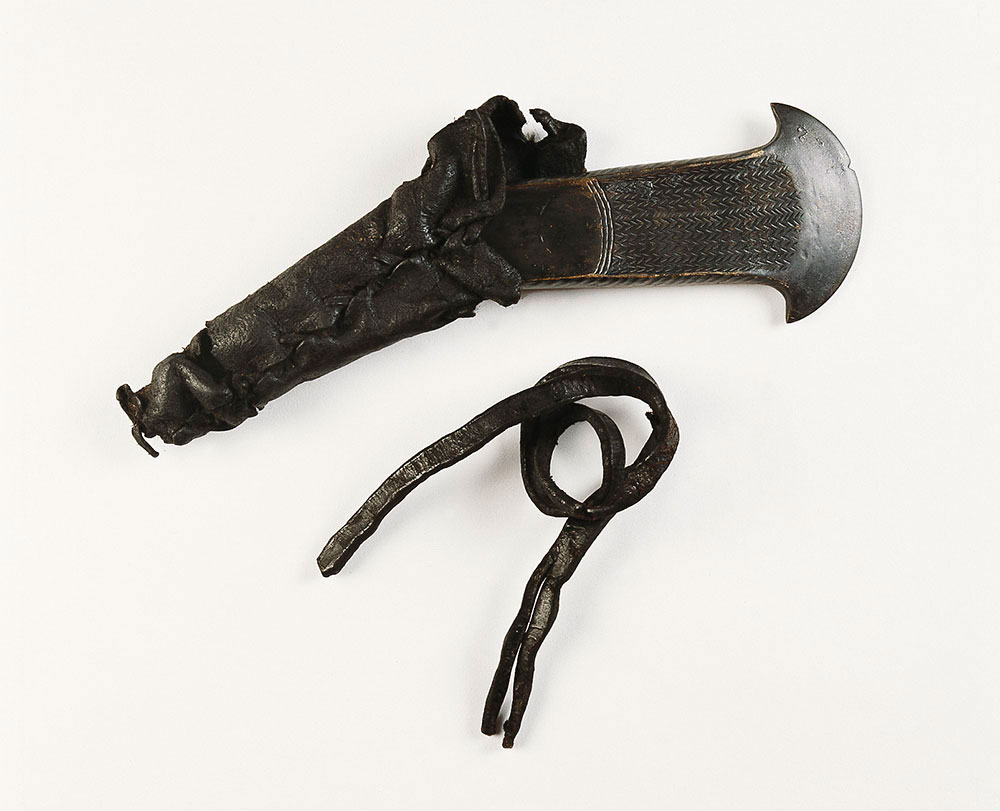
Metalsmiths learned that if they mixed another metal called tin with copper, they could produce a stronger metal called bronze. They created objects from bronze such as this decorated bronze axehead which was stored in its own leather pouch. Axehead, Brockagh, Co. Kildare c 1900-1700 BC.
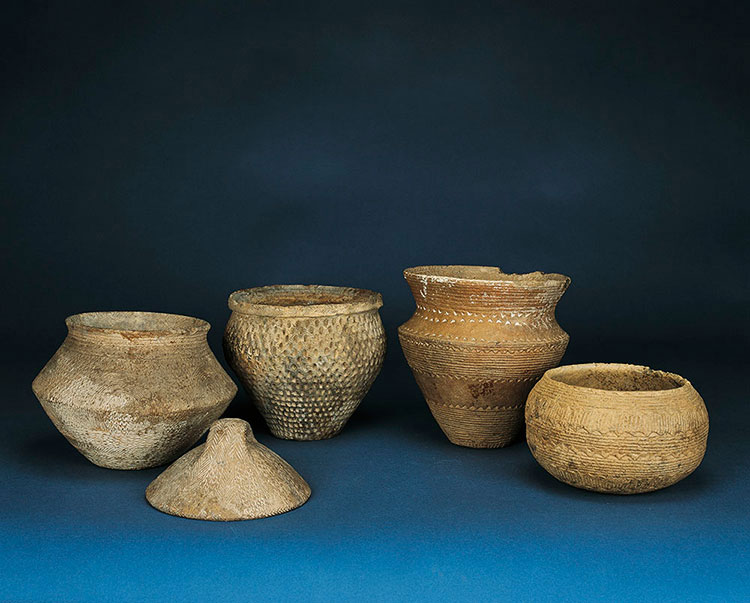
In this period, people began to bury their dead in individual stone-lined graves called cists or in pits. Decorated bowls and vases called ‘food vessels’ were buried with the dead such as these from Danesfort, Co. Kilkenny; Stonepark, Co. Mayo; Greenhills, Co. Dublin and Lisnamulligan, Co. Donegal.
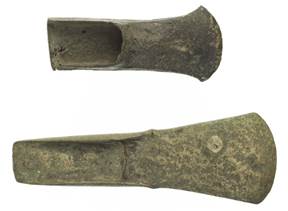
The climate became wetter and colder. Irish people cremated their dead and placed the burnt bones in undecorated urns, often buried at the centre of small ring ditches. Metalsmiths made bronze spearheads, rapiers and axes such as these palstaves from Tooreen More and Gowland, Co. Cork.
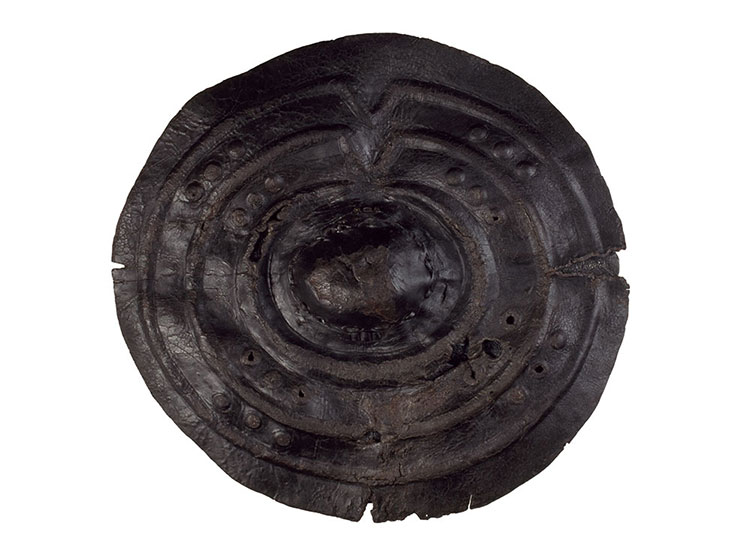
Irish metalsmiths created large numbers of weapons, especially swords and spearheads, perhaps because society became more violent. Objects found from this time include weapons, tools, musical instruments and shields, including this leather shield from Clonbrin, Co Longford. c 700 BC.
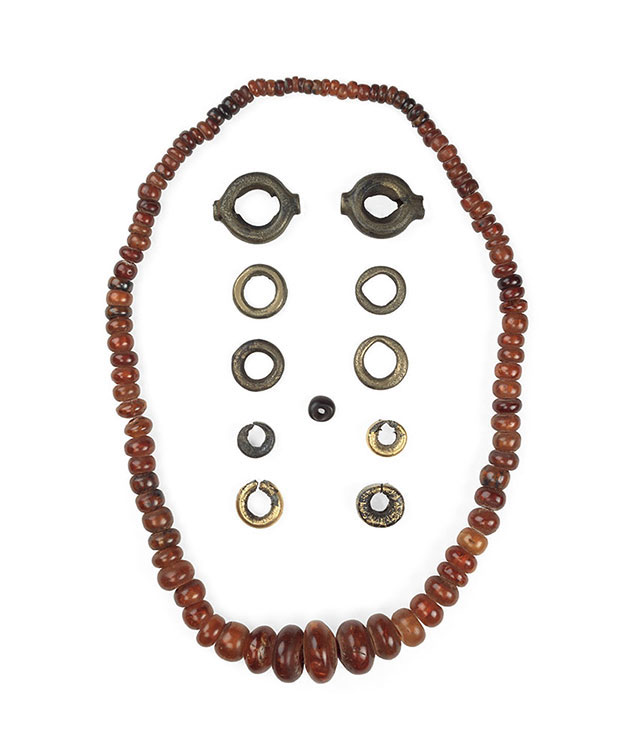
People in Ireland traded with people in other parts of Europe for precious materials such as amber, a fossilised tree resin from the Baltic Sea. Amber beads were used to make necklaces of beads graduating in size such as this one from a hoard of ornaments found at Tooradoo, Co. Limerick, c. 800-700 BC.
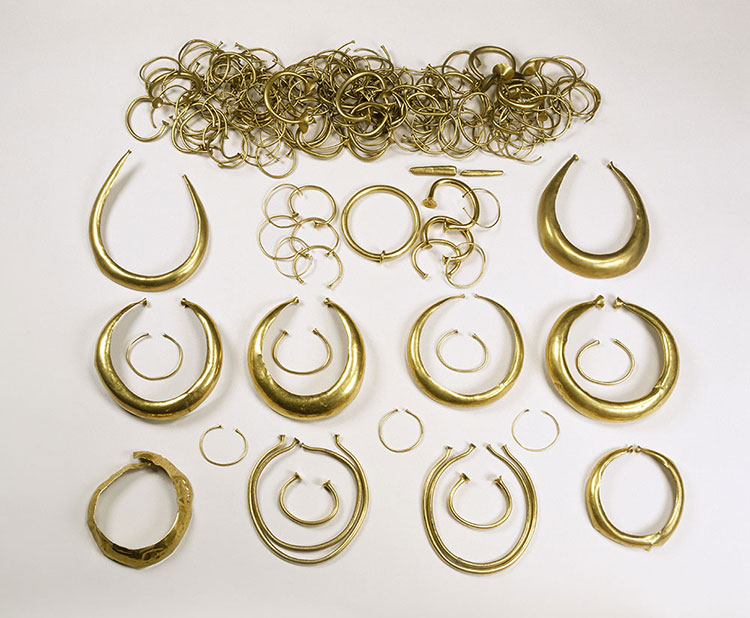
During the Late Bronze Age many hoards of objects, often containing gold objects, were buried in bogs and other watery places. One of the largest ever discovered was found in 1854 when a railway was being built at Mooghaun North, Co. Clare. The hoard contained hundreds of gold bracelets and seven neck ornaments c. 800–700 BC.

The sheet bronze cauldron from Castlederg, Co. Tyrone, is a great example of the metalworking skills developed in Ireland in the Late Bronze Age. It is made from nineteen separate sheets of bronze and has 359 rivets. Cauldrons were used for feasts on special ceremonial occasions, c. 800-700 BC.
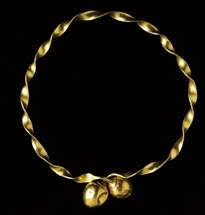
Iron gradually replaced bronze as the metal used for tools and weapons. Bronze was used mostly for horse harness and jewellery while gold was used to make ribbon torcs and other neck ornaments. Influences from Europe and Britain meant changes in language and decorative styles. A blend of native and European styles can be seen in gold torcs found in a bog at Ardnaglug, Co. Roscommon.
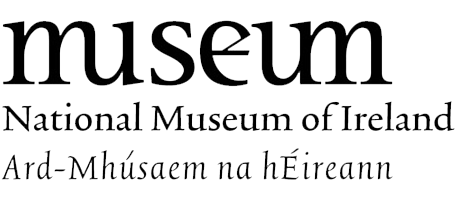 The National Museum of Ireland
The National Museum of Ireland Association of Teachers' / Education Centres in Ireland
Association of Teachers' / Education Centres in Ireland St Patrick's College, Drumcondra
St Patrick's College, Drumcondra Professional Development Service for Teachers
Professional Development Service for Teachers